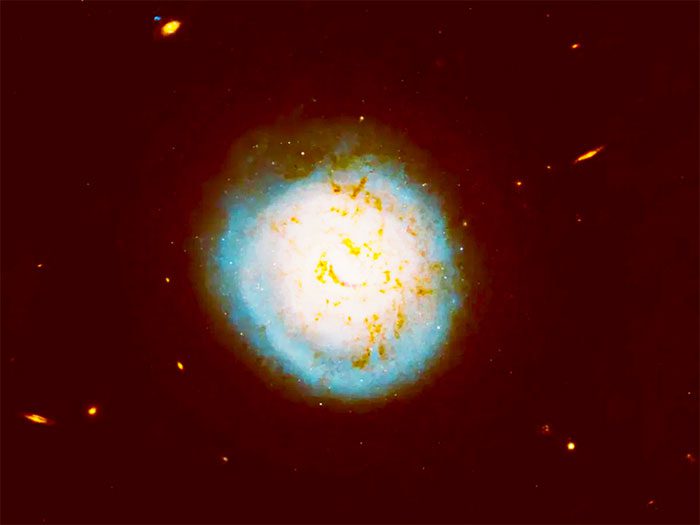ESO 420-G013 is a spiral galaxy with a perfect baseball-like appearance, featuring an active supermassive black hole illuminating its star-filled core.
As part of a study on infrared-bright galaxies, the Hubble Space Telescope has focused on ESO 420-G013. According to experts at the Hubble Space Telescope, ESO 420-G013 is an extremely bright spiral galaxy, located approximately 50 million light-years away from Earth in the Sculptor constellation.
In its latest observations, the Hubble Space Telescope captured the bright core, dark brown molecular dust filaments swirling around, and the round, baseball-like appearance, which are the most notable features of the ESO 420-G013 galaxy.

ESO 420-G013 is a spiral galaxy with a perfect baseball-like appearance, along with an active black hole illuminating its star-filled center. (Image: NASA/Catholic University of America).
Additionally, ESO 420-G013 possesses an active galactic nucleus—a highly luminous point powered by a supermassive black hole—that also lights up newly formed stars at a rapid rate, painting a vivid picture of the cosmic lifecycle unfolding within.
Deep within ESO 420-G013, its hungry supermassive black hole is consuming surrounding material, ripping and stretching matter into extremely hot accretion disks, glowing across all wavelengths of the electromagnetic spectrum. The Hubble’s Wide Field Camera 3 has captured this type of light that is invisible to the naked eye, providing a more comprehensive understanding of this type of celestial object.
What makes ESO 420-G013 particularly special is its visibility. Most galaxies with active galactic nuclei contain supermassive black holes so bright that their radiation completely obscures the light from the host galaxy. However, galaxies like ESO 420-G013 stand out because the structure surrounding the galaxy can be clearly observed.
For over three decades, the Hubble Space Telescope has significantly contributed to our understanding of the universe. Its observations have helped uncover the peculiarities of distant exoplanets, the presence of dark energy, and advanced our knowledge of the processes that form celestial objects similar to ESO 420-G013. This new discovery continues to encourage analysis and appreciation of the unique activities of galaxies like ESO 420-G013 in the vast universe.


















































